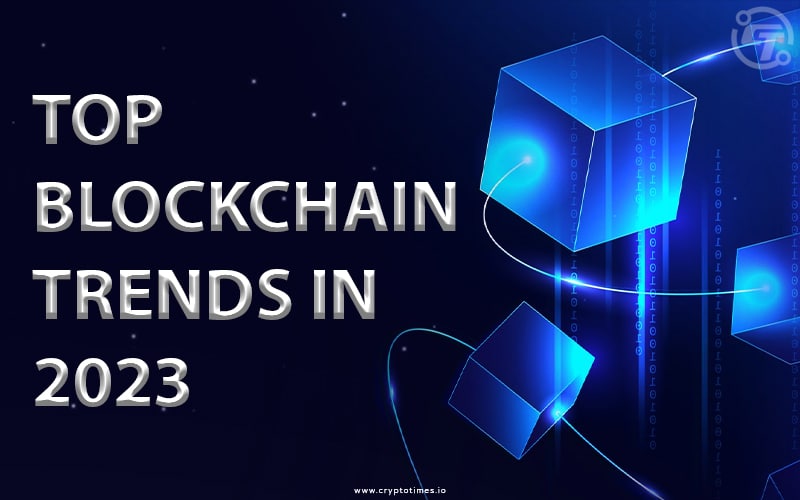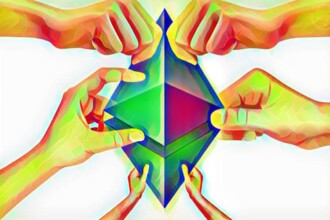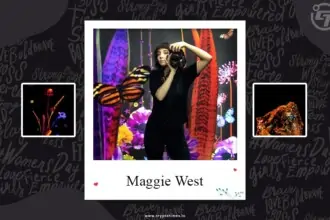Blockchain technology is one of the most disruptive and transformative innovations of the 21st century. It has the potential to revolutionize various industries, from business to healthcare, by enabling decentralized, transparent, and secure transactions and interactions.
Blockchain technology is neither static nor monolithic, it continues to evolve and adapt to the challenges and opportunities that arise with time. Therefore, it is important to understand the current and future trends of blockchain technology and how they will shape the world in 2023 and beyond.
In this article, we will explore the top blockchain trends of 2023 that will impact various fields such as finance, art, gaming, AI, sustainability, and more.
Decentralized Finance, or DeFi
Decentralized finance (DeFi) is one of the most popular and prominent trends in blockchain technology. DeFi refers to the ecosystem of financial services and products that are built on top of blockchain platforms, such as Ethereum, Binance Smart Chain, Solana, etc. Defi aims to provide users with financial services that are more accessible, inclusive, and transparent. This fast-going trend has shown great potential in transforming the financial services such as lending, borrowing, trading, investing, insurance, etc.
Defi has experienced exponential growth and innovation since 2020. According to DeFiLama, the total value locked (TVL) in Defi protocol has increased from $20 billion at the end of 2020 to $175.5 billion at the end of 2021. Needless to say, 2022 was a dark age, with crypto winter looming over everyone’s head, DeFi was able to attract a lot of innovation and experiments, with new platforms, protocols, and products emerging everyday.
DeFi has also expanded its scope and diversity by offering various services and products such as stablecoins, flash loans, derivatives, asset management, etc. In 2023, we can expect DeFi to continue its growth and innovative progress, as more users, developers, and investors join the Defi space.
Key Trends to Watch out for in DeFi Space are:
1. Cross-chain Interoperability
As the Defi ecosystem expands across different blockchains, it will need to provide cross-chain interoperability solutions that would enable seamless communication and exchange of assets as well as data between different chains.
With growing popularity and adoption, users will demand more secure ways to move their assets and data across multiple chains without compromising on speed or cost. They will expect more efficient bridges, hubs, and oracles to emerge and facilitate cross-chain communication and transfers.
2. Layer 2 Solutions
As the demand for DeFi increases, the next challenge it will face is scalability. As more users and transactions flock to DeFi platforms , they will put more pressure on the underlying blockchain networks that support them. As a result, chains will experience high fees, congestion, latency issues, and more. This will affect the user experience and performance of Defi applications.
Therefore, in the future, we can expect more layer 2 solutions such as rollups, sidechains, state channels, etc. to provide faster and more cost effective transactions without compromising on the security.
3. Regulatory Compliance
As DeFi becomes more mainstream, it will attract more attention and scrutiny from regulators and authorities. Defi has the potential and power to influence the global financial system. It will have to balance its ethos of decentralization and permissionlessness with the need for compliance and legitimacy in the eyes of the law.
As a result, more regulatory frameworks and standards are likely to come forth to guide the development and adoption of DeFi products and services. We can also expect more compliance-oriented solutions such as KYC/AML protocols, identity verification systems, auditing tools, etc. to emerge and integrate with DeFi platforms.
Non-Fungible Tokens (NFTs)
Non-fungible tokens (NFTs) bubble was one of the biggest bubble of crypto ecosystem in 2021 and 2022. NFTs provided a new way for creativity and innovation in the digital era, as well as a new market for digital creators and collectors. Non-fungible tokens are digital assets whose uniqueness, ownership, and versatility create a one-of-a-kind digital version of work or entity using blockchain.
In a short amount of time NFTs have generated a lot of revenues for artists, platforms, and investors. It was estimated that NFTs generated approximately $412 billion in the year 2021. In 2023, we expect NFTs to continue their growth and diversification, with more use cases and applications emerging in different domains.
Key Trends to Watch for in NFTs are:
1. Art:
Art is the major and the foremost sector of NFT, as it allows artists to create and sell their digital artworks as NFTs on online platforms. NFTs provide artists with more control over their work and its distribution, as well as give them exposure to a global audience and market.
Art NFTs also create new forms of expression and innovation for artists as they can leverage blockchain technology to create interactive, dynamic, and programmable artworks. Some of the prominent platforms that host art NFTs are OpenSea, SuperRare, Nifty Gateway, and Foundation.
2. Gaming:
Gaming is one of the most popular and lucrative sectors of NFTs, as it combines fun, engagement, and monetization. NFTs enable gamers to own and trade their in-game items, characters, and achievements on blockchain platforms, creating a new economy and community for gaming. S&P Global’s research group Kagan estimates that publishers generated $3.64 billion in revenues from NFTs connected to in game items in 2022 only.
In 2023, we can expect more games to adopt NFTs, as well as more innovation and integration of NFTs with gaming platforms, such as Steam, Epic Games, Ubisoft, etc.
3. NFT Tickets:
NFT tickets are another emerging and promising trend in the NFT space. NFT tickets are digital tokens that represent access and ownership of various events and experiences, such as concerts, sports, festivals, etc. With constant cravings for new experiences by fans,ans we can see huge rise in NFT tickets as they provide additional features and benefits to users, such as exclusive content, access, rewards, etc.
NFT tickets can also enable users to interact and connect with other users, artists, organizers, etc., creating a more vibrant and dynamic community.
Blockchain and Artificial Intelligence (AI)
Blockchain and artificial intelligence (AI) are two of the most powerful and disruptive technologies of the 21st century. They have the potential to complement and enhance each other in various ways, opening up gates of heaven for developers with new possibilities and solutions for various problems and challenges. Blockchain and AI integration, is one of the most promising and exciting trends in blockchain technology. While we can expect to experiment with AI to give out some of the best altcoins to invest in, their integration can provide benefits such as:
- Data privacy and security:
Blockchain can provide a secure and decentralized platform for storing and sharing data, while AI can provide encryption and anonymization techniques for protecting data. This can enable users to control their own data and prevent unauthorized access or misuse of data.
- Decentralized AI
Blockchain can provide a distributed and trustless network for running AI algorithms and models, while AI can provide optimization and coordination techniques for improving the performance and efficiency of the network. This can enable users to access and contribute to AI services without intermediaries or central authorities.
- Smart contracts and automation:
Blockchain can provide a programmable and self-executing platform for creating and enforcing agreements, while AI can provide logic and intelligence for designing and executing smart contracts. This can enable users to automate various processes and transactions without human intervention or errors.
In 2023, we can expect blockchain and AI integration to grow and innovate, as more developers and researchers explore and experiment with the potential and applications of blockchain and AI.
Key Trends to Watch for in Blockchain and AI are:
1. Data marketplaces:
Data marketplaces are platforms that enable users to buy and sell data in a secure, transparent, and fair way. Data marketplaces can leverage blockchain and AI to ensure the quality, Validity and provenance of data, as well as to provide incentives, rewards, and governance for data providers and consumers. Data marketplaces can create new opportunities and value for data owners, users, and analysts, as well as for various industries and sectors.
2. Decentralized autonomous organizations (DAOs)
DAOs are organizations that operate without a central authority or hierarchy, and are instead governed by their members through the use of smart contracts, which can leverage blockchain and AI to coordinate, manage, and execute various tasks and decisions while aligning the incentives, interests, and values of their members. By creating new forms of collaboration, innovation, and governance, DAOs offer unique opportunities as well as new challenges and risks.
3. Artificial Intelligence of Things (AIoT)
AIoT is the convergence of AI and IoT (Internet of Things) technologies. IoT refers to a network of physical devices that are connected and communicate with each other. By leveraging blockchain technology, AIoT can provide a secure, scalable, and decentralized platform for collecting, storing, and processing data from IoT devices, as well as enabling smart contracts and automation for IoT applications. AIoT has the potential to create innovative solutions for domains such as smart cities, smart homes, smart healthcare, smart agriculture, and more.
Central Bank Digital Currencies (CBDCs):
Central Bank Digital Currencies (CBDCs) are digital forms of fiat currency issued by a central bank. CBDCs are designed to be used as legal tender and operate like physical banknotes and coins. The goal of CBDCs is to enhance the efficiency of the payment system and improve financial inclusion while maintaining the stability of the monetary system.
The development of CBDCs has been driven by the increasing popularity of cryptocurrencies and the potential benefits of blockchain technology. Countries such as China, Sweden, and the Bahamas have already launched their CBDCs. The United States, the European Union, and many other countries are exploring the development of CBDCs.
CBDCs are still in their early stages, but their adoption is expected to grow rapidly in the coming years. By 2023, it is expected that more central banks will have launched their CBDCs, and more businesses and individuals will have adopted them as a form of payment.
Key Trends to Watch for in CBDCs:
1. Interoperability and standardization:
Interoperability and standardization will be key to the success of CBDCs. As more central banks launch their CBDCs, it will be important for them to be interoperable with each other and with existing payment systems. Standardization of CBDCs will ensure that they are easy to use and understand, which will increase their adoption.
2. Privacy and security:
Privacy and security are important considerations for CBDCs. Central banks will need to ensure that CBDCs are secure from fraud and hacking. Additionally, they will need to balance the need for privacy with the need for transparency and anti-money laundering measures.
3. Use cases and benefits:
CBDCs have the potential to revolutionize the way we make payments. They can be used for everything from small transactions to large international transfers. CBDCs can also increase financial inclusion, as they can be used by anyone with a smartphone. Additionally, CBDCs can reduce the cost and time of making payments, which can benefit businesses and individuals alike.
Blockchain and Sustainability:
Blockchain technology has the potential to revolutionize sustainability efforts by providing transparency, traceability, and accountability in supply chains, carbon credits, and waste management.
Blockchain technology is a decentralized, digital ledger that records transactions and ensures their integrity. By integrating blockchain technology into sustainability efforts, it is possible to increase transparency and traceability, which can help to reduce environmental harm and ensure that resources are used in a sustainable manner.
By 2023, it is expected that more businesses and organizations will have integrated blockchain technology into their sustainability efforts. This will increase the transparency and traceability of supply chains, carbon credits, and waste management efforts. The impact of blockchain technology on sustainability will be felt across industries, from food and agriculture to fashion and energy.
Key Trends to Watch for in Blockchain and Sustainability:
1. Supply chain transparency and traceability:
Supply chain transparency and traceability are important for ensuring sustainability. By using blockchain technology, it is possible to track the origin of products, ensuring that they are produced in an ethical and sustainable manner.
2. Carbon credits and offsets:
Blockchain technology can be used to create digital tokens that represent carbon credits and offsets. These tokens can be traded on a decentralized marketplace, making it easier for companies to offset their carbon emissions.
3. Circular economy and waste management:
Blockchain technology can also be used to track waste management and recycling efforts. By using blockchain technology, it is possible to ensure that waste is properly disposed of and recycled, reducing environmental harm.
Enterprise Blockchain Adoption: Challenges, Opportunities, and Impact
As we enter 2023, blockchain technology continues to disrupt industries and revolutionize the way we do business. While blockchain started as the backbone of cryptocurrencies, its potential for secure, decentralized transactions has caught the attention of enterprises across the globe. In this article, we’ll explore the definition and use cases of enterprise blockchain adoption, the challenges and opportunities it presents, and some successful projects to learn from.
Enterprise blockchain adoption refers to the implementation of blockchain technology by businesses to streamline their operations, enhance security, and create new opportunities for growth. Blockchain’s distributed ledger technology allows for secure and transparent transactions without the need for intermediaries, making it ideal for industries where trust and transparency are paramount.
One of the primary use cases for enterprise blockchain adoption is supply chain management. By using blockchain to track the movement of goods and ensure their authenticity, companies can create a more efficient and trustworthy supply chain. Other use cases include financial services, healthcare, and energy, where blockchain’s secure and decentralized nature can provide significant benefits.
Challenges and Opportunities of Enterprise Blockchain Adoption:
While the benefits of enterprise blockchain adoption are clear, it’s not without its challenges. One of the primary hurdles is interoperability, as different blockchain protocols may not be compatible with each other. Another challenge is regulatory uncertainty, as the legal framework for blockchain technology is still evolving.
However, the opportunities presented by enterprise blockchain adoption far outweigh the challenges. By leveraging blockchain, companies can create more efficient, transparent, and secure systems, resulting in cost savings and increased trust from customers. Blockchain can also enable new business models, such as the creation of decentralized marketplaces and the tokenization of assets.
Examples of Successful Enterprise Blockchain Projects
There are already several successful enterprise blockchain projects that provide valuable insights into how blockchain can be effectively implemented. Here are three examples:
- IBM Food Trust – This project uses blockchain technology to track the movement of food products from farm to table, ensuring their authenticity and safety. It has been adopted by major players in the food industry, including Walmart and Nestle.
- Maersk TradeLens – Maersk, the world’s largest container shipping company, created TradeLens to provide real-time tracking and documentation for cargo shipments. The platform uses blockchain to improve efficiency and reduce costs.
- JPMorgan’s Quorum – Quorum is an enterprise blockchain platform developed by JPMorgan that allows for secure and efficient financial transactions. It has been used for several successful initiatives, including the creation of JPM Coin, the bank’s digital currency.
Potential Impact of Blockchain Technology on Business Models, Operations, and Competition
The impact of blockchain technology on businesses and industries is already being felt, and it’s only expected to grow. Blockchain can enable new business models, such as the creation of decentralized marketplaces, where buyers and sellers can interact without the need for intermediaries. It can also transform supply chain management by providing end-to-end transparency and reducing the risk of fraud.
Blockchain technology also presents a significant challenge to traditional business models, as it allows for the creation of entirely new systems that bypass existing intermediaries. For example, blockchain-based financial services could disrupt traditional banking models by providing faster, cheaper, and more accessible financial services.
Conclusion:
As we move into 2023, it’s clear that blockchain technology will continue to play a significant role in enterprise adoption. By leveraging blockchain’s distributed ledger technology, companies can create more efficient, transparent, and secure systems that provide cost savings and increased trust from customers.
To stay ahead of the curve, it’s essential for businesses to stay up-to-date with the latest blockchain trends and developments and explore how blockchain can be effectively implemented in their operations. While there are challenges to overcome, the opportunities presented by blockchain adoption







